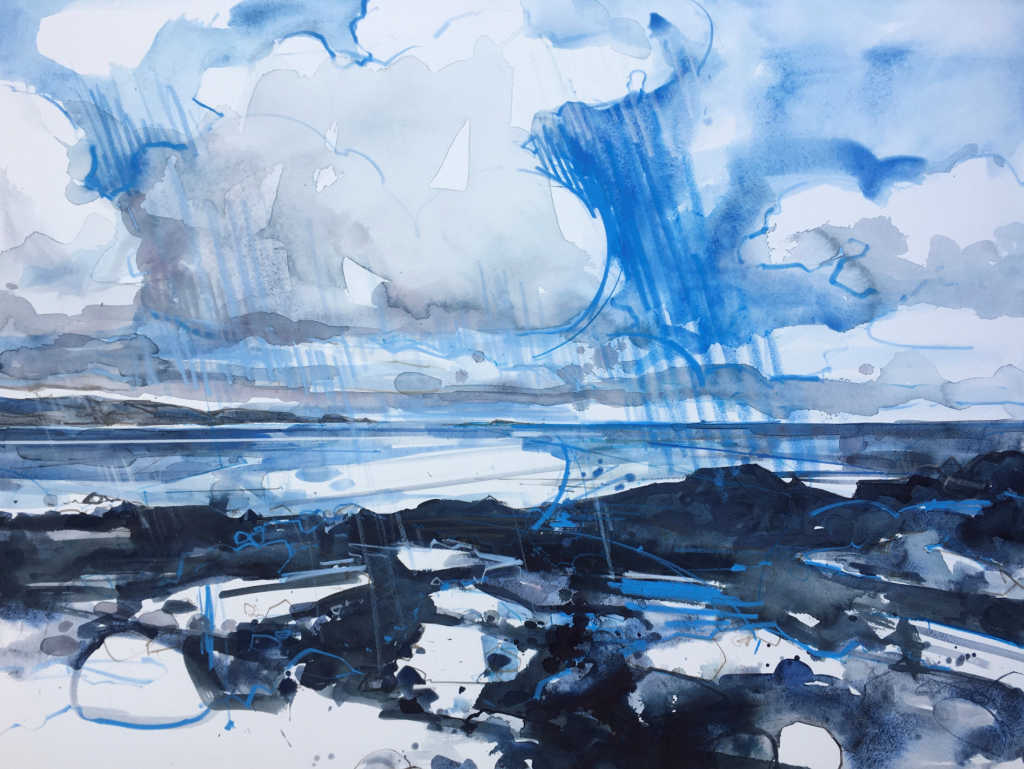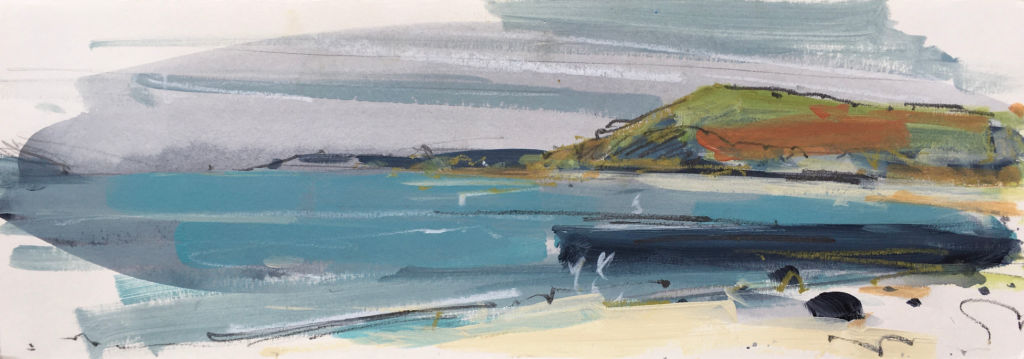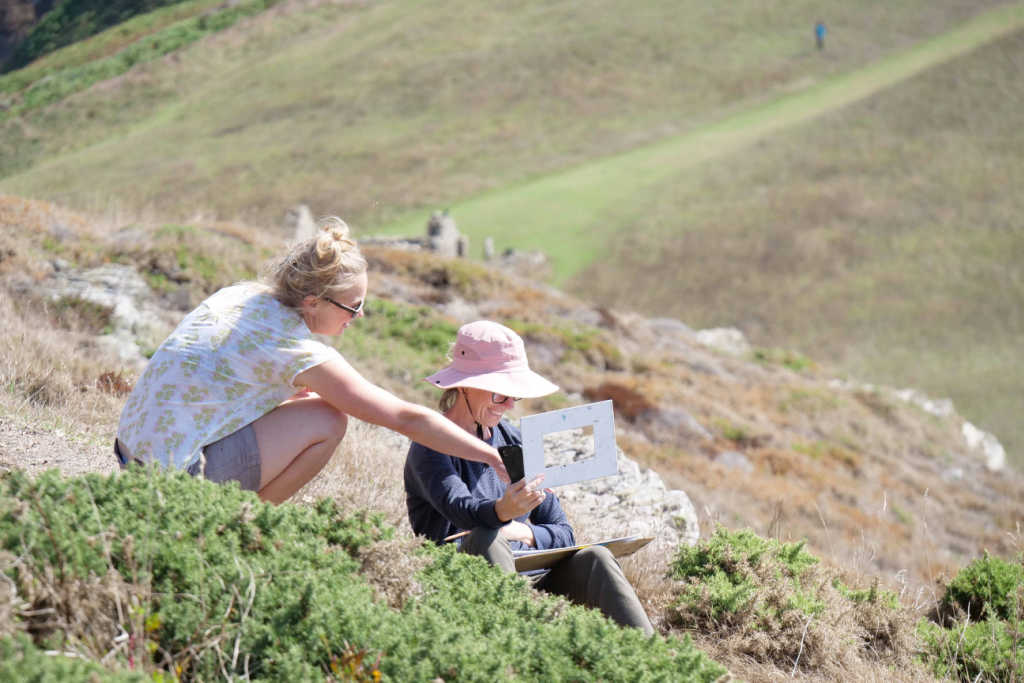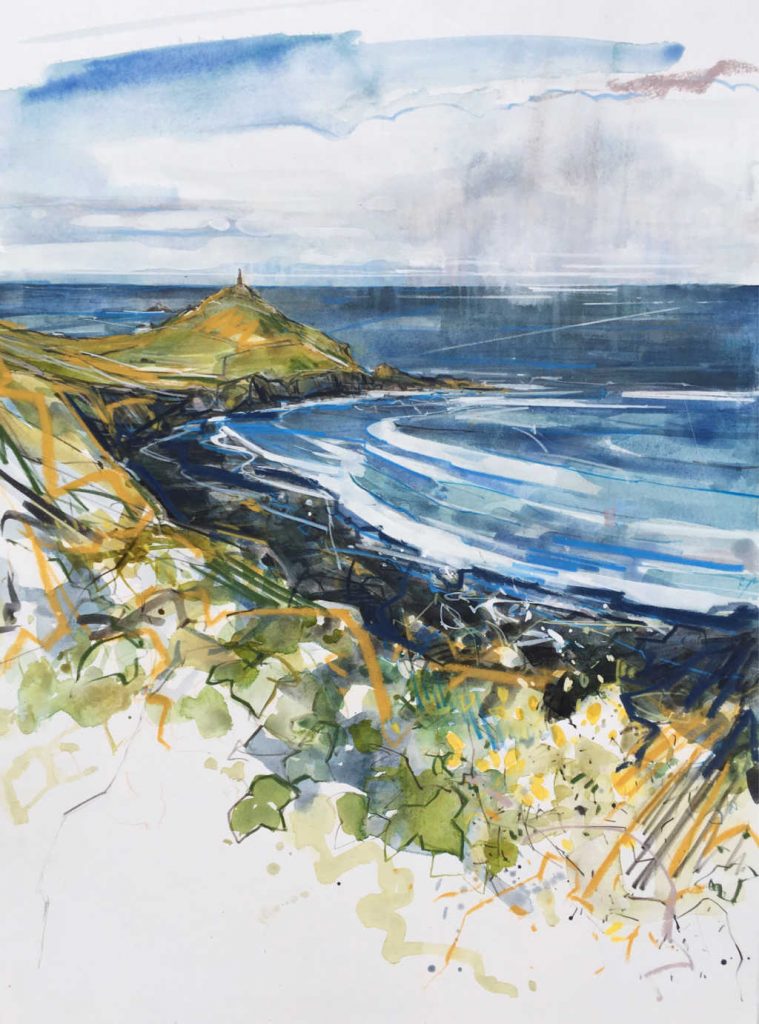Artist Imogen Bone is a popular teacher at the Newlyn School of Art. A respected coastal painter, she shares her in-depth knowledge of the Cornish coastline and encourages participants to experiment with a range of water-based media. Here we join Imogen on her four-day Coast Landscape Painting Course.
As we follow Imogen down the coast path, ahead of us the boulder-strewn beach is deserted. There are eight of us on Imogen’s four-day Coast Landscape Painting Course. Some are full-time artists, others are less experienced: all of us though are keen to discover new creative approaches and learn new skills.
After a short walk, we get onto a headland, put down our equipment, and take in the view. Rocky cliffs fall away beneath us to a restless sea. In the distance the coastline is dark and ragged. It’s an ideal location for creating atmospheric artworks.
We have minimal kit on our outing: water soluble pencils and pastels, watercolour crayons and a limited palette of acrylics. “I spend a lot of time outdoors, so I try to think of practical ways of working while I’m out and about,” Imogen tells us. “I really try to minimise what I carry with me.”
First, we sit and simply gaze. “Take your time to really see what’s in front of you,” Imogen advises. “Absorb. Don’t rush in and think you have to create a masterpiece in the field. I usually do lots of sketches then take them back to the studio to work up. What you want to capture in your sketches and studies is a sense of colour, composition and light. You can get so much from these studies when you look at them again, because you have already put the time in, observing.”

This place is already familiar to Imogen. Using a large paintbrush, she quickly builds a fluid impression of the landscape around us. She barely looks down as her hands and brushes dance across the paper. “Capture a little bit of this, a little bit of that, then block in some colour, shape and form”, she says. “Even a simple brushstroke can tell you a lot depending on its weight, density of colour and direction. Follow the angle of the rocks and the cliffs, and if it’s cloudy or foggy bring the sky into the landscape or sea. I imagine the sky and clouds have weight: they press down on the horizon and become part of the landscape.”

At the studio later we examine our artwork. We have learned a great deal by taking in the location through our drawings and paintings.
Colour studies done in the studio exploring the range of blues, greens and greys that we will all put to good use in our next few days inform our understanding of the importance of colour mixing and the difference gaining some control over our use of colour can make instead of using colours direct from the tube. These exercises exploring colour along with the emphasis on paring down materials taken out into the field are a revelation and something that I am sure will stay with me and help me in the future.

The following days are brighter than the first, and the colour and light is extraordinary. We stride out over coastal paths, painting moorland vibrant with gorse and heather, or dramatic cliffs plunging to a turquoise sea. By the end of our few days together, we have learned to work quickly and freely with few colours and materials. It has been a fascinating process. We leave clutching sketches, some more ‘finished’ than others, but all truly evoke a sense of place.
You can find out more about the course plus available dates on the Coast course page.
Blog article by Kari Herbert
Artworks by Imogen Bone tutor on the Coast course.